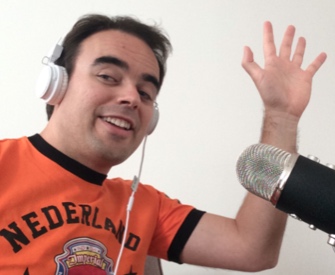Fresh herring / Verse haring – What happens when foreigners eat typical Dutch food
CLICK HERE to subscribe to my Youtube channel
Each year the Netherlands welcomes people from all over the world. They come to visit, live, work and maybe learn Dutch. But learning Dutch is not the only thing.
Coming to a new counrty also means getting to know a new culture. And Dutch food is one of those things you really have to get to know.
One of the food traditions in the Netherlands is Verse Haring (fresh herring).
What is it?
Verse haring is often called Hollandse Nieuwe. The term ‘Hollandse Nieuwe’ is a term in the Netherlands, that may only be used for the traditional product caught between 1 May and 30 September.
Hollandse Nieuwe
In 2007, a law was made that set the annual start of the herring season, so that throughout the Netherlands the selling season starts on a single date and collective promotional activities can be undertaken.
This law also states that herring may be called Hollandse Nieuwe if the fish is sufficiently fat and has been caught, salted and matured in the traditional Dutch way.
The fish is often decorated with a small Dutch flag.
And the good news: it is healthy!
Herring is an oily fish and according to the Dutch ‘voedingscentrum’ (nutrition center) oily fish is a healthy choice. The advice is to eat fish once a week.
First keg and herring parties
There is always a lot of fuss about the start of the season, with the result that the first keg is sold for tens of thousands of euros.
In 2019 the first keg was sold for almost €100,000! And why? Mainly for publicity for the buyer. But also, to support a good cause. From then on the herring is for sale everywhere and herring parties are organised in numerous places.
Nowadays, herring parties are organised in many cities. These are mostly network events, with the presence of the larger local companies, where money is also collected for charity.
Vlaggetjesdag
In June it’s Vlaggetjesdag (Flag Day) every year. On this special day, the first keg of newly caught herring is brought to Scheveningen.
How to eat it?
The students in the video didn’t really know what to do with the two herring on the table.
You can eat it in two ways:
1- As a broodje haring; a white bun with raw herring, or just the herring. But eating it like this is not the original Dutch way. The real Dutch way of eating herring is a bit different.
2- The other way is simply one raw herring. You eat it like this: you grab the fish by the tail, you tip your head back and bite the fish upwards.
So you don’t get your hands dirty, because you eat it in one piece. Optional extras with haring are chopped onion or sliced gherkins.
Uitjes (onions)
The origin of chopped onions near the herring is attributed to the salting. In order to disguise the amount of salt and therefore the age of the herring, the fish was eaten with an onion. In some regions the herring was also eaten with acid (zuur).
Vocabulary
- Eet smakelijk! – Bon appetit!
- Dat was heerlijk / lekker – That was delicious / tasty
- Wil je nog meer? – Do you want more?
- Mag ik er nog 1?– Can I have another one?
- Ik heb genoeg gegeten. – I have had enough to eat
- Proost! – Cheers
Love it or hate it
Is it that only Dutch people like it? The reactions to the herring vary from delicious to disgusting. This reaction is comparable to the way foreigners look at things like the boterhammen (sandwiches), deep fried food and drop (Dutch licorice).
From the comments about the herring:
- Hollandse nieuwe is one of my favourite foods! I can eat like 5 to 7 of those in one sitting … oliebollen are my number one favourite Dutch food ever!
- I am Dutch myself and I wouldn’t eat that even if you offered me a million euros.
Other typical Dutch products that are pretty much loved by everyone are the sweet stuff: poffertjes, oliebollen and stroopwafels.
The Dutch and water
Herring is a typical Dutch product. But why is that? It has to do with the water and the North Sea.
If you want to know about Dutch history, there is one aspect that is essential: water!
The Netherlands and the water
Looking at a map of the Netherlands, you can see a small country next to the North Sea. Besides that there are a lot of lakes, rivers and canals.
The North Sea has always been a threat to the Netherlands. Why? Because a big part of the country is below sea level. Hence the name ‘Netherlands’, low lands.
You could see the Netherlands as a really large (and still sinking) bath tub.
This means that first the dunes and later the dykes and Delta Works protect the country from all the water. And of course water products are part of Dutch cuisine. Not only herring but from the salt water there is also eel and trout.
From the sea we eat mussels, sole and plaice.
International Dutch words about sailing and the sea
English words of Dutch origin can reveal that in the 17th century, the Dutch and the sea were important.
So you see that ‘cruise’ was kruisen, which means ‘to cross’ in Dutch.
And other words like:
- ‘corvette’ (corf = ‘small ship’)
- ‘sloop’ (sloep)
- ‘smack’ (smak – the sound it made on the sea)
- ‘yacht’ (jacht)

Bart de Pau
online Dutch teacher & founder of the Dutch Summer School & Dutch Winter School


